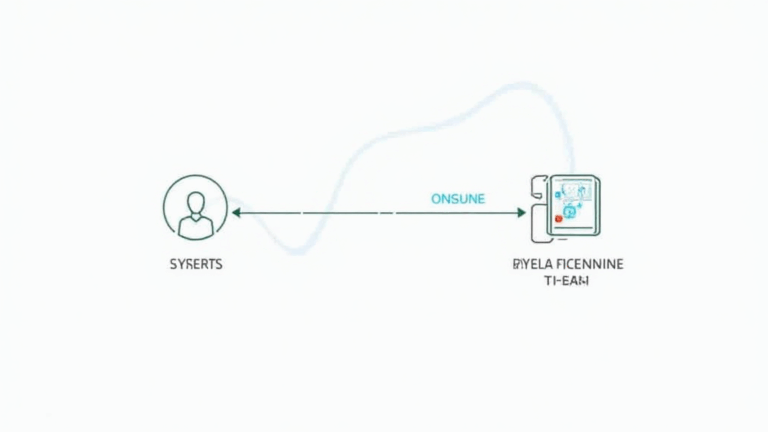Navigating HIBT Vietnam AML KYC Procedures: A Crucial Guide for Crypto Platforms
With an estimated $4.1 billion lost to DeFi hacks in 2024, the importance of AML and KYC procedures in the cryptocurrency sector cannot be understated. Especially in Vietnam, where digital asset adoption is surging, understanding and implementing these protocols is crucial for any crypto platform aiming for sustainability and credibility. This article aims to delve deep into the HIBT Vietnam AML KYC procedures, providing both the technical knowledge and practical insights necessary for effective compliance.
What Are AML and KYC?
Anti-Money Laundering (AML) and Know Your Customer (KYC) are regulatory frameworks designed to prevent financial crimes, including money laundering, fraud, and terrorism financing. In Vietnam, tiêu chuẩn an ninh blockchain has become particularly relevant as the landscape of financial services evolves.
Like a bank vault protecting your assets, these procedures are designed to ensure that platforms know their users and can accurately assess the risks involved in transactions.

The Significance of HIBT Compliance in Vietnam
- Growing User Engagement: According to recent reports, Vietnam’s cryptocurrency user base has increased by 25% in 2024.
- Increased Regulation: Vietnamese regulators are tightening laws around cryptocurrency exchange operations, emphasizing the significance of AML and KYC protocols.
- Trust Building: Compliance enhances platform reputation, attracting more users and investment.
Understanding the HIBT AML Procedures
The HIBT (Hệ thống theo dõi và ngăn ngừa hoạt động rửa tiền) lays out a series of steps that need to be followed meticulously. As part of this framework, here are essential components:
Risk Assessment
Every platform must conduct a risk assessment to identify potential vulnerabilities. Factors influencing this may include geographical risks, user activity patterns, and the types of digital assets involved.
User Identification
Platforms are required to implement stringent measures for user identification, such as:
- Collecting government-issued ID
- Proof of address, such as utility bills or bank statements
- Verifying user identity via biometric methods when possible
KYC Compliance – Step by Step
Incorporating KYC processes is not merely about following the law; it is a proactive method of maintaining trust and integrity in the platform. Here’s a breakdown of a comprehensive KYC process:
Data Collection
Collect detailed information from customers, including name, address, date of birth, and nationalities. Establish a standardized process flow to gather this data.
Document Verification
Once the data is collected, all documents must be authenticated. Utilize a reliable third-party service provider, especially in a burgeoning market like Vietnam, to ensure accuracy.
Ongoing Monitoring
Continuous monitoring is crucial. Platforms should analyze users’ transaction behaviors regularly, flagging any transactions that seem suspicious or deviant from established norms.
Real-life Implementation of AML KYC in Vietnam
In practice, implementing stringent HIBT Vietnam AML KYC procedures requires not just software solutions but also training and awareness programs:
For example: Imagine a crypto exchange conducting weekly training sessions for its compliance team, where they review user transaction patterns and discuss emerging threats. This proactive stance helps to mitigate risks effectively.
Case Study
A notable crypto exchange in Vietnam reported a 30% drop in fraudulent activities after adopting a robust KYC process that included AI-driven user verification.
Incorporating Technology into HIBT Compliance
With the advent of blockchain technology, implementing HIBT AML KYC procedures has become smoother. Here are some methods:
- Utilizing AI: AI can significantly aid in real-time monitoring and data verification.
- Blockchain for Transparency: Storing user documents on a blockchain ensures that data hasn’t been tampered with.
Key Challenges and Solutions in Implementation
While compliance is mandatory, several challenges exist:
- User Resistance: Some users may be reluctant to provide personal information.
- Technological Limitations: Smaller platforms may lack the resources to implement advanced KYC technologies.
Solutions: Providing educational resources on the importance of these measures can improve user compliance.
Future Trends in Vietnam’s Cryptocurrency Landscape
As we look towards the future, here are some trends likely to influence AML KYC processes:
- Integration of Advanced Technologies: Expect to see more blockchain and AI integrations for better compliance.
- Regulatory Evolution: Regulations will continue to evolve. Staying updated is essential for all platforms.
- User Education: As users become more aware of data privacy and security issues, platforms will need to educate them on the benefits of compliance.
Conclusion
Understanding and implementing the HIBT Vietnam AML KYC procedures is not only about compliance; it’s about building a sustainable platform that users trust. As the cryptocurrency landscape continues to shift, staying ahead with robust compliance strategies will not only ensure the longevity of operations but foster an environment of trust and integrity.
As we navigate these changes, remember that adhering to regulations can enhance user experience and protect your platform from potential risks associated with non-compliance. Reach out to professionals or consulting entities for assistance where necessary.
For more insightful resources, check out related content on our website and ensure your crypto platform remains compliant!
Best of luck in your journey towards safe and compliant cryptocurrency operations!
Author: Dr. Nguyen Tran, a financial compliance expert with over 15 published papers in blockchain security and has led numerous audits for prominent cryptocurrency projects.




